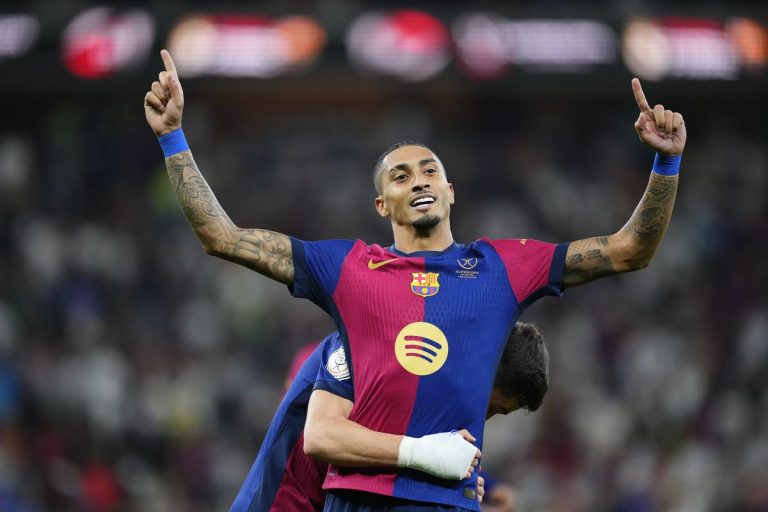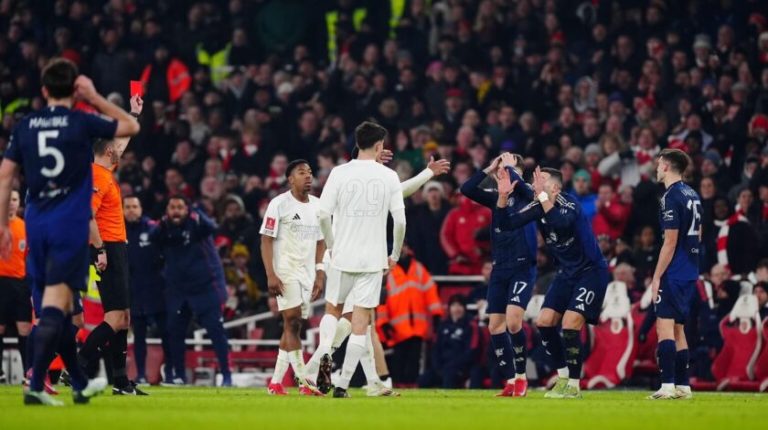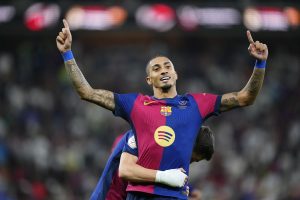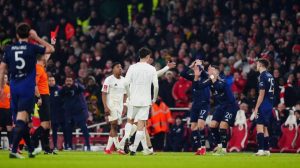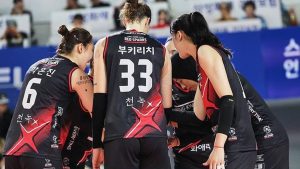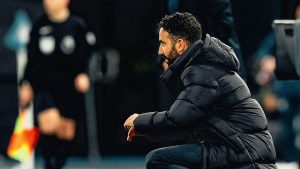The Premier League team has undergone a brief pre-season phase during the pandemic. The transfer market has also been running and is still open until October 5. Talking about the Premier League transfer, Chelsea really stole the attention because of the high transfer activity.
Until now, Chelsea has brought in six players for the first team. Hakim Ziyech, Timo Werner, Ben Chilwell, Malang Sarr, Thiago Silva, and Kai Havertz became new names at Stamford Bridge. Apart from Sarr, who is likely to be loaned out, five other names are projected to fill Frank Lampard’s first team.
Werner, Havertz and Ziyech raised the quality of Chelsea’s front line, which was previously occupied by older players namely Willian and Pedro. Weakness at the left-back post will be added by Chilwell. While Silva is expected to be the leader in Chelsea’s back line so that coordination will be better.
The new players each have the abilities they hope to solve some of Chelsea’s problems in Lampard’s first season. The Blues have really improved the quality on various fronts. Not only improving quality, Chelsea’s new player can also provide a variety of tactics for Lampard.
Lampard has many options not only in terms of formations, but different types of players can also be used for various styles of play. For example he has Werner as a modern striker with high mobility but Tammy Abraham and Olivier Giroud as the classic number nine can not be forgotten. Let’s discuss the variations one by one Chelsea variations starting from the line-up of players, how to play, to alternatives to old players.
4-3-3
The asymmetry referred to in this 4-3-3 formation is the movement of the players during the attacking phase. Chilwell as a modern fullback can overlap to the wing to expand the playing area. Christian Pulisic can stab from the left like he did at the end of the 2019/20 season. Chelsea’s best player last season, Mateo Kovacic will form a triangle to smooth progress from the left side. Chilwell can release a cross because there is Havertz on the right side who can come late to the opponent’s penalty box.
Unlike the right side where Reece James as a fullback can act as an inverted fullback. He won’t move up the flanks like Chilwell, but instead go inside to form a midfield three with Kovacic and N’golo Kante. James can cut the opponent’s counter-attack from a high area so that Chelsea can counter press quickly.
This move will allow Havertz to exploit the right half space in the final third of the court. Meanwhile Ziyech can play wide and release an inswing cross into the penalty box. Rotation can also be done by the two players with high creativity.
Assistance also came from Werner, who was often involved. When this movement occurs, Havertz can rise parallel to the opponent’s defensive line to extend the playing area and keep the opponent’s last line from rising. Chelsea’s attack can be very fluid.
When not holding the ball, Chelsea can still do high pressing. Even at a higher intensity with Werner, Havertz, and Ziyech. All three players are no stranger to proactive defending as the club had previously adopted a similar tactic. If the opponent succeeds in a progression, the wingers can go down into a 4-1-4-1 formation to narrow the space for the opponent.
This scheme can be done if Lampard dares to replace captain Cesar Azpilicueta in the right fullback position. If Azpi plays, the asymmetry will not be formed because the Spanish player cannot act as an inverted fullback. Lampard will have to find another leader if Azpi doesn’t play. Kante can be trusted wearing the captain’s armband but defensive command can be given to Thiago Silva, if he can quickly become fluent in English.
4-2-3-1
This formation can be said to be the formation that most facilitates Havertz. The 21-year-old’s role as number 10 allows him to help both sides of the attack, unlike the previous formation where he was more focused on the right side. Havertz can help attack from a low enough area or go up to the right to rotate with Ziyech.
The overlap direction of the two fullbacks is to the wing. Kovacic and Kante’s double pivots set the rhythm of attack from midfield. The challenge is that Chelsea’s negative transition is not easy due to not many personnel.
On paper, these formations and tactics work well against teams that defend with low blocks. Havertz can break through the opponent’s tight defenses with the freedom he has. He can step in to build attacks from midfield or try to exploit the space between the lines.
Against the team that has good defense, space is generally created in the wing. Chelsea can make lots of crosses when it comes to teams like that. Havertz could play a big part in this scheme. Posture 189 cm and good positioning can be optimized to make chances from a cross. In the defensive phase, Chelsea can still do high pressing as before. There is a slight difference in form when opposing progressions. Chelsea will naturally form a 4-4-1-1 defense.
Azpi can still be used as a right-back so that Lampard does not lose the captain’s figure on the field. But the most complicated homework is counterattacking and defensive forms. Chelsea certainly don’t want to concede 54 goals like last season.
3-4-3
This formation can be used by Lampard to give extra players at the back. Last season Lampard applied this formation several times against big teams with high attack quality. One example is the semi-final of the FA Cup where Chelsea beat Manchester United 3-1.
The extra players at the back meant that Lampard had to sacrifice players up front. Either Pulisic, Werner, Havertz, or Ziyech will not play. If Pulisic is sacrificed, then Werner can be shifted to the left and Havertz acts as a false nine. This formation could replicate Werner’s role at RB Leipzig where he did not play as a number nine. He has the classic striker tandem in Yussuf Poulsen.
Ziyech can be given high freedom to be creative. Meanwhile, Azpi as a center back on the right side can become an overlapping center back. He will overlap to make things win numbers on the right and cross from low areas. Havertz and Werner were targeted.
Without the ball, both wingbacks descend to form a 5-2-3 or 5-4-1 if the attackers are down. On paper, Chelsea’s defense will be tighter. But defense is of course not just a matter of form and number of players, but communication and discipline.
Chelsea’s attacking style will change if Werner is used as a lone striker, no matter what formation is adopted. Last season when Abraham or Giroud played as a striker, Chelsea were able to build up an attack from below only to lure the opponent up before sending the ball into the target man.
Werner’s 180 cm posture does not allow the 24-year-old to act as a bouncing ball. He is better involved in attacks with a level ball. This means that Chelsea’s pressing resistance must be higher because they will lose a lot of the ball if they feed Werner.
Conversely, the presence of Abraham and Giroud can provide variety for Lampard if the opponent succeeds in killing Werner. Substitution of players can be the key to changing the scheme, returning to using the bouncing ball for a more direct attack.
In midfield, Jorginho can be an option as a connector for the back line and midfield. However, if Kovacic or Kante is sacrificed, then Chelsea are more vulnerable to being hit by the opponent’s counterattack because Jorginho is slower.
Variations of various attacks remain difficult to produce results if Chelsea do not clean up in the defense area. Defense organizations still need improvement. Another option is that Chelsea can apply the ‘best defense is attack’ with high quality in the area of attack.
Thiago Silva’s existence could also be key. Chelsea’s defensive weakness last season was not just counterattacks, but communication and organization so Chelsea often conceded unnecessary. For example, there are players who are not awake during a cross situation or a defender who is ball-watching.
Regarding the transition, Chelsea must focus more on improving the organization, not speed. Last season’s energetic young players have a high determination in the transition phase. The problem is they are out of sync. There are players who reorganize the defense when a number of other players counter-press. Space is automatically created and can be used by opponents.
The addition of new players makes Chelsea have a pretty good squad depth. Mason Mount, Ross Barkley and Ruben Loftus-Cheek gave the squad depth in midfield. Meanwhile, Callum Hudson-Odoi can be a coating for the main attacker. Likewise with the defense line. Chelsea still have Andreas Christensen and Kurt Zouma at center back.
In addition, it is not impossible for Chelsea to add new players. Club director and Roman Abramovich’s right-hand man in England, Marina Granovskaia is reportedly in the process of negotiating Rennes goalkeeper Edouard Mendy. Kepa Arrizabalaga must improve his form if he doesn’t want to lose his place. Declan Rice is also included in the next target. The West Ham defensive midfielder can be a pretty suitable coating for Kante because of his good defensive qualities.
Variety and quality is not a guarantee Chelsea will be successful in a short period. New players clearly need to adapt to the environment and pressure in West London. Lampard’s man management will also be tested on how he should not forget the young players who were a pillar last season. Non-technical factors still play a big role for the success of a team.
ASL







